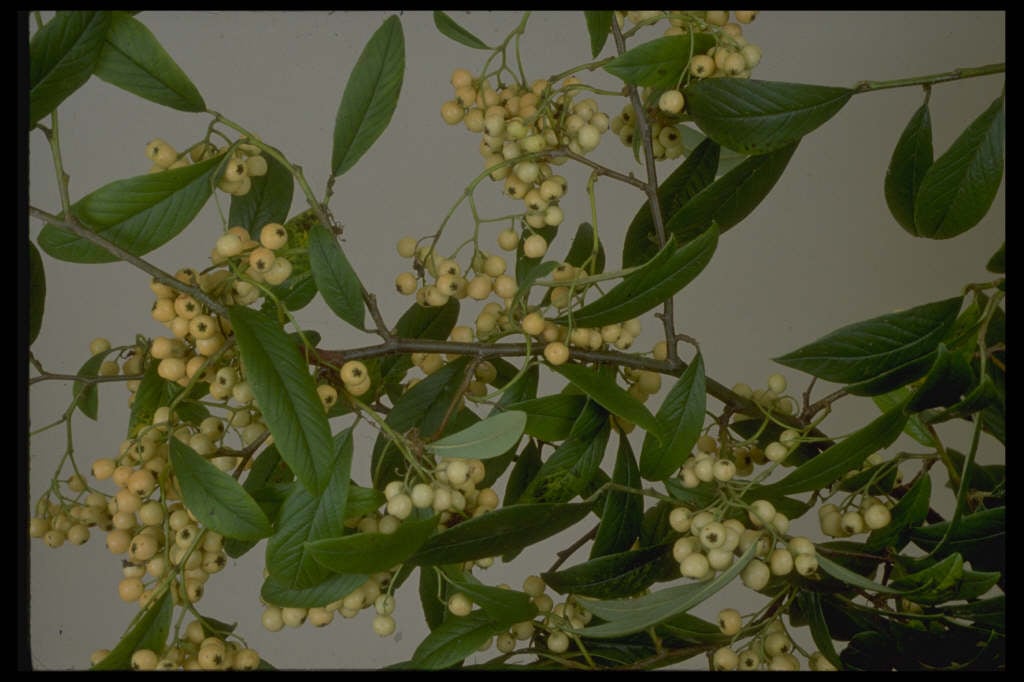Cotoneaster 'Rothschildianus'
cotoneaster 'Rothschildianus'
Spreading, deciduous or semi-evergreen shrub to 5m tall, with large, narrowly lance-shaped, deeply-veined leaves, and small white flowers in large clusters in early summer, followed by large clusters of creamy-yellow berries over a long period in autumn

Buy this plant
Size
Ultimate height
4–8 metresTime to ultimate height
10–20 yearsUltimate spread
4–8 metresGrowing conditions
Moisture
Well–drainedpH
Acid, Alkaline, NeutralColour & scent
| Stem | Flower | Foliage | Fruit | |
| Spring | Green | |||
|---|---|---|---|---|
| Summer | White | Green | ||
| Autumn | Green | Cream Yellow | ||
| Winter | Green |
Position
- Full sun
- Partial shade
Aspect
South–facing or West–facing or East–facing
Exposure
Exposed or Sheltered Hardiness
H6Botanical details
- Family
- Rosaceae
- Native to GB / Ireland
- No
- Foliage
- Semi evergreen
- Habit
- Bushy, Spreading branched
- Potentially harmful
- Fruit are ornamental - not to be eaten. Wear gloves and other protective equipment when handling. Pets: Fruit are ornamental - not to be eaten - see the HTA guide to potentially harmful plants for further information and useful contact numbers
- Genus
Cotoneaster can be deciduous or evergreen shrubs or small trees, with simple, entire leaves and clusters of small white or pink flowers in spring and summer, followed by showy red, purple or black berries
- Name status
Accepted
How to grow
Cultivation
Grow in any well-drained soil in full sun or partial shade, with shelter from cold winds
Propagation
Propagate by semi-hardwood cuttings in late summer
Suggested planting locations and garden types
- Coastal
- Cottage and informal garden
- Wildlife gardens
- Low Maintenance
- Hedging and screens
Pruning
Pruning group 8 or pruning group 13 for wall-trained specimens
Pests
May be susceptible to scale insects, cotoneaster webber caterpillar and aphids including woolly aphid
Diseases
May be susceptible to fireblight and honey fungus
Get involved
The Royal Horticultural Society is the UK’s leading gardening charity. We aim to enrich everyone’s life through plants, and make the UK a greener and more beautiful place.